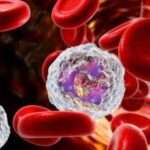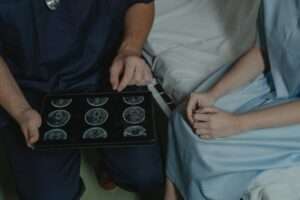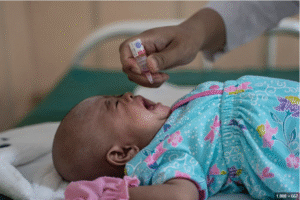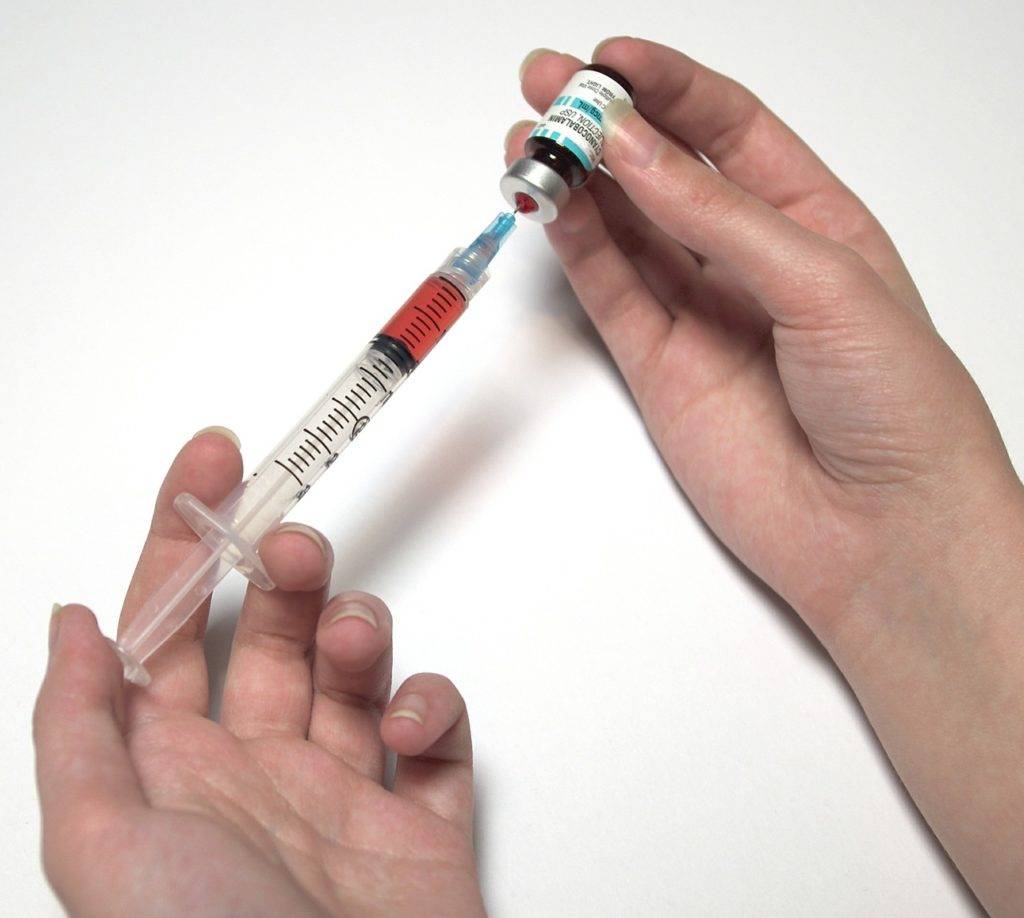 When parents hear about hepatitis B, they often think, “It’s rare” or “It’s not something my child will face.” But hepatitis B is not only common worldwide, it’s deadly when ignored.
When parents hear about hepatitis B, they often think, “It’s rare” or “It’s not something my child will face.” But hepatitis B is not only common worldwide, it’s deadly when ignored.
Hepatitis B (HBV) is often whispered about as a “liver virus,” but many parents don’t realize just how dangerous it can become—especially when an infection becomes chronic. In children, what starts quietly may one day lead to life-threatening consequences.
This is the story parents need to hear: the deadly complications that hepatitis B can bring—and how you can fight back. Many moms who want to protect their kids are understandably confused by conflicting voices—“talking heads” online, friends, or even relatives who dismiss the vaccine.
But here’s the truth: unless someone has cared for a child struggling with hepatitis B complications, they don’t fully understand the stakes. Let’s look at the deadly complications of hepatitis B that most parents never imagine—and why the vaccine is a must.
What is Hepatitis B? A Quick Primer
Before diving into dangers, let’s get the basics clear.
- Hepatitis B is a viral infection that attacks the liver.
- It can show up as acute (short-term, often mild or even silent) or chronic (lasting more than 6 months).
- Children—especially infants infected early in life—are more likely to develop chronic hepatitis B.
- Over time, chronic HBV can silently damage the liver for years before symptoms appear.
- Many infected children have no obvious signs until the disease has progressed.
Because of this stealth, some parents assume that once their child “looks fine,” all is well. But that assumption can be dangerous.
Why It Can Turn Deadly: The Path From Virus to Catastrophe
To understand how hepatitis B can kill, it helps to see the cascade—from virus to liver damage to organ failure or cancer. Here are the key deadly complications you must know:
1. Cirrhosis (Severe Scarring of the Liver)
Hepatitis B causes ongoing inflammation in the liver. Over time, healthy liver tissue forms into scar tissue. This “cement” blocks normal blood flow, leaving the liver stiff and damaged. This process is called fibrosis, and with continued damage, it becomes cirrhosis—where healthy liver tissue is replaced by scar.
Children with chronic infection are at risk of cirrhosis by young adulthood. In cirrhosis:
- The liver loses its ability to carry out vital functions: detoxifying blood, producing proteins, and regulating metabolism.
- Blood flow through the liver is obstructed, which causes complications like portal hypertension (increased pressure in the liver’s blood vessels).
- Patients may accumulate fluid in the abdomen (ascites), develop swelling (edema), or internal bleeding from dilated veins (esophageal varices).
- Liver failure can ensue—when the organ can no longer sustain life.
Cirrhosis is a major turning point. At that stage, the risk of death increases significantly, and often a liver transplant becomes the only hope.
2. Liver Cancer (Hepatocellular Carcinoma)
Chronic hepatitis B is one of the world’s leading causes of hepatocellular carcinoma (HCC), a primary liver cancer. Unlike some cancers, HBV-related liver cancer can develop even without cirrhosis. The only prevention? Stopping the infection before it starts—with vaccination.
Why HBV leads to cancer:
- The virus integrates into liver cell DNA, introducing mutations.
- Chronic inflammation stimulates cycles of cell death and regeneration—higher risk of mistakes and malignant transformation.
- Even before full cirrhosis sets in, cancer can develop in HBV patients.
This cancer is stealthy and deadly. It often presents late, with symptoms like weight loss, abdominal pain, jaundice, and poor prognosis.
3. Fulminant Hepatitis (Acute Liver Failure)
In rare cases, acute HBV infection can overwhelm the liver in weeks. Fulminant hepatitis leads to confusion, bleeding problems, and coma. In some cases, hepatitis B (especially in acute flare or co-infection) can trigger sudden massive liver damage.
This leads to acute liver failure—when a large proportion of liver cells suddenly stop working. Survival often requires an emergency liver transplant—a terrifying prospect for any parent. In acute liver failure:
- The liver cannot clear toxins (like ammonia) from the blood, causing confusion, brain swelling (hepatic encephalopathy), bleeding disorders, and multi-organ failure.
- Without an emergency liver transplant, the outcome is often fatal.
While rare in children, this risk is real—especially in those with chronic HBV who undergo reactivation or additional insults.
4. Reactivation of Hepatitis B
Even if a child seems stable or the virus is “suppressed,” it can wake up. Reactivation refers to the virus resuming replication at high levels, resulting in liver injury or failure. This reactivation can cause an acute flare, pushing the liver from a compensated to a decompensated (failure) state. Triggers include:
- Immunosuppressive therapy (e.g., chemotherapy, steroids)
- HIV co-infection
- Other illnesses or stressors
Extrahepatic (Outside the Liver) Complications
While the liver faces the biggest damage, HBV can cause harm elsewhere. Some “silent killers” include:
 5. Portal Hypertension and Internal Bleeding
5. Portal Hypertension and Internal Bleeding
As cirrhosis worsens, pressure builds in the veins around the liver. This can cause swollen veins in the stomach or esophagus to rupture, leading to life-threatening internal bleeding. Imagine a teenager collapsing from vomiting blood—all because of an infection they got as a baby.
6. Kidney Disease
HBV doesn’t stop at the liver. It can trigger immune complexes that damage the kidney filters or glomeruli (glomerulonephritis). Another case is membranous nephropathy or nephrotic syndrome, resulting in proteinuria, swelling, and kidney failure.
Kidney impairment may occur (hepatorenal syndrome). This can cause swelling, high blood pressure, and even kidney failure.
7. Blood Vessel Inflammation
Hepatitis B can cause polyarteritis nodosa (PAN), a rare but dangerous inflammation of blood vessels. This condition can damage skin, nerves, and vital organs, leading to pain, rashes, and sometimes death.
- Polyarteritis nodosa (blood vessel inflammation): Rare but serious vasculitis linked to HBV.
- Bone disorders or metabolic disturbances: In severe chronic disease, nutrition and hormone balance may suffer.
8. Multiorgan Collapse
As damage accumulates, the liver’s failure has a cascading impact across the body. This multiorgan collapse is often how hepatitis B becomes “deadly” in practice.
- The body can’t clot blood properly, leading to bleeding.
- Toxins build up in the bloodstream, affecting the brain (encephalopathy).
- The immune system weakens, increasing the risk of bacterial infections or sepsis.
- The heart and lungs may struggle under circulatory strain.
🤞Though less common, these complications add danger, especially when they compound with liver failure
9. Silent Progression and Early Death
Perhaps the most chilling complication is silence. Children may look perfectly healthy while the virus quietly destroys their liver. By the time symptoms appear, the damage may be irreversible.
Why Parents Rarely Imagine These Dangers
You may wonder: If HBV is so dangerous, why don’t parents immediately see red flags? Here are the reasons:
- Long latency period: The damage builds slowly over years—even decades—before symptoms appear.
- Silent progression: Children may appear healthy, with normal growth, until decompensation hits.
- Non-specific symptoms: Mild fatigue, occasional abdominal discomfort, and subtle changes can be mistaken for “just being tired” or other mild illnesses.
- Lack of awareness or screening: Many parents don’t know the HBV status, and periodic liver checks may not be done early.
- False security after vaccination or treatment: Some assume that once vaccinated or on antiviral therapy, the danger is gone—when in truth, vigilance must continue.
Real-Life Example (Hypothetical Scenario)
Imagine a child, “Anna,” born to a mother with chronic hepatitis B. Anna receives her birth dose of HBV vaccine, but one of the follow-up doses is delayed. She remains a silent carrier into childhood. For years, she has been essentially symptom-free.
In her early teens, she began to complain of fatigue, occasional stomach fullness, and slight swelling in the feet. Blood tests reveal rising liver enzymes and low albumin (a liver protein), and imaging shows early cirrhosis. Without timely intervention, Anna’s liver worsens.
By age 20 or 25, she may develop liver cancer or decompensated liver failure, needing a transplant. In the meantime, complications like bleeding from esophageal varices or kidney problems may strike—and sadly, some children never reach transplant in time.
🙌 This scenario isn’t mere fiction: it mirrors many real-world cases seen in hepatology literature.
How Parents Can Fight Back: Prevention, Vigilance, Action
While the possible complications are frightening, the good news is: many are preventable or detectable early. Here’s your action plan.
1. Ensure Full Immunization (Vaccination)
The HBV vaccine is a proven shield. In fact, Omega Pediatrics has written about the many benefits of timely hepatitis B vaccination.
- Give the birth dose within 24 hours after birth.
- Complete the full vaccine series (usually 3–4 doses).
- If doses are missed, do a catch-up schedule—don’t skip.
- Also, ensure mothers are screened early in pregnancy so newborn prophylaxis (vaccine + HBIG) can be given.
Vaccination is the foundation of preventing chronic HBV and the complications that follow.
Read more in this article: 7 Lifelong Benefits of Hepatitis B Vaccination for Your Children’s Health and Future Generations
 2. Screen Early and Periodically
2. Screen Early and Periodically
Early detection allows timely interventions. If you know or suspect HBV infection (e.g., in mother, sibling, community), get your child tested:
- HBsAg, anti-HBs, anti-HBc (viral markers)
- Liver function tests (ALT, AST, bilirubin, albumin)
- Imaging (ultrasound), if liver changes are possible
- In high-risk children, periodic follow-up every 6-12 months is recommended.
3. Use Antiviral Therapy When Indicated
When a child has chronic HBV with signs of active liver damage, doctors may prescribe antivirals (e.g., tenofovir, entecavir). Even with therapy, regular monitoring is essential; therapy reduces risk—it does not eliminate it. Antiviral medications include:
- Suppress viral replication
- Reduce further liver injury
- Lower risks of cirrhosis and cancer
4. Lifestyle and Supportive Measures
Once HBV is in play, protecting the liver becomes vital:
- Avoid alcohol, herbal supplements, and medications toxic to the liver
- Maintain a healthy diet (balanced protein, avoid excessive fats)
- Control metabolic risks (obesity, diabetes, fatty liver)
- Vaccinate against other liver-invading infections (hepatitis A)
- Regular checkups and imaging to catch early complications
5. Monitor for Complications
Even in well-managed HBV, keep watch for red flags:
- Sudden increases in fatigue, swelling, and jaundice
- Gastrointestinal bleeding (vomiting blood, black stool)
- Confusion or mental changes (encephalopathy)
- Abdominal swelling (ascites)
- Changes in kidney function (reduced urine, proteinuria)
- Alarm signs prompt urgent evaluation by a hepatologist
6. Prepare for Advanced Care
In high-risk or advanced disease:
- Referral to a liver specialist (hepatologist)
- Assessment for liver transplantation
- Screening for liver cancer (ultrasound, alpha-fetoprotein)
- Multidisciplinary support (nutritionists, nephrologists, counselors)
Why This Matters Deeply for Parents
- Time is your enemy. The window to intervene is often narrow once cirrhosis or cancer takes hold.
- We can’t see the damage early. Without screening, the virus works quietly.
- Prevention is vastly simpler than cure. A vaccine + follow-up is far easier than managing end-stage liver disease.
- Hope exists. With modern antivirals and transplant, many children live well—but only if complications are caught early.
 Why “Talking Heads” Against Vaccines Shouldn’t Sway You
Why “Talking Heads” Against Vaccines Shouldn’t Sway You
Anyone who has not cared for a child vomiting blood from ruptured veins, or waiting for a liver transplant, should not convince you to gamble with your baby’s health. The hepatitis B vaccine is safe, effective, and the only proven shield against these deadly outcomes.
FAQ—Complications of Hepatitis B
Q1: What are the chances my baby will develop complications if infected at birth?
Q2: Can hepatitis B cause death in children?
Yes. Through liver failure, cancer, or sudden complications like bleeding, HBV can be fatal.
Q3: Why don’t most children with HBV look sick?
The virus often causes silent damage for years. Kids may look healthy until advanced disease develops.
Q4: Can hepatitis B affect organs other than the liver?
Yes. It can damage the kidneys and blood vessels, leading to serious extra-liver complications.
Q5: Is there a cure if my child gets hepatitis B?
No. Treatments can manage chronic HBV, but there is no cure. Prevention through vaccination is the best protection.
Vaccinate Early: Give Your Child a Bright Future
As a mother, your goal is simple: protect your child from suffering you cannot see coming. Hepatitis B is not a distant threat. It’s a present danger with life-altering consequences. Vaccinate early, vaccinate fully, and give your child the future they deserve.
Read on at Omega Pediatrics’ reading resources. This article provides further insights: The Magic of the Hepatitis B Vaccine: Weighing the Risks and Benefits for Your Child


